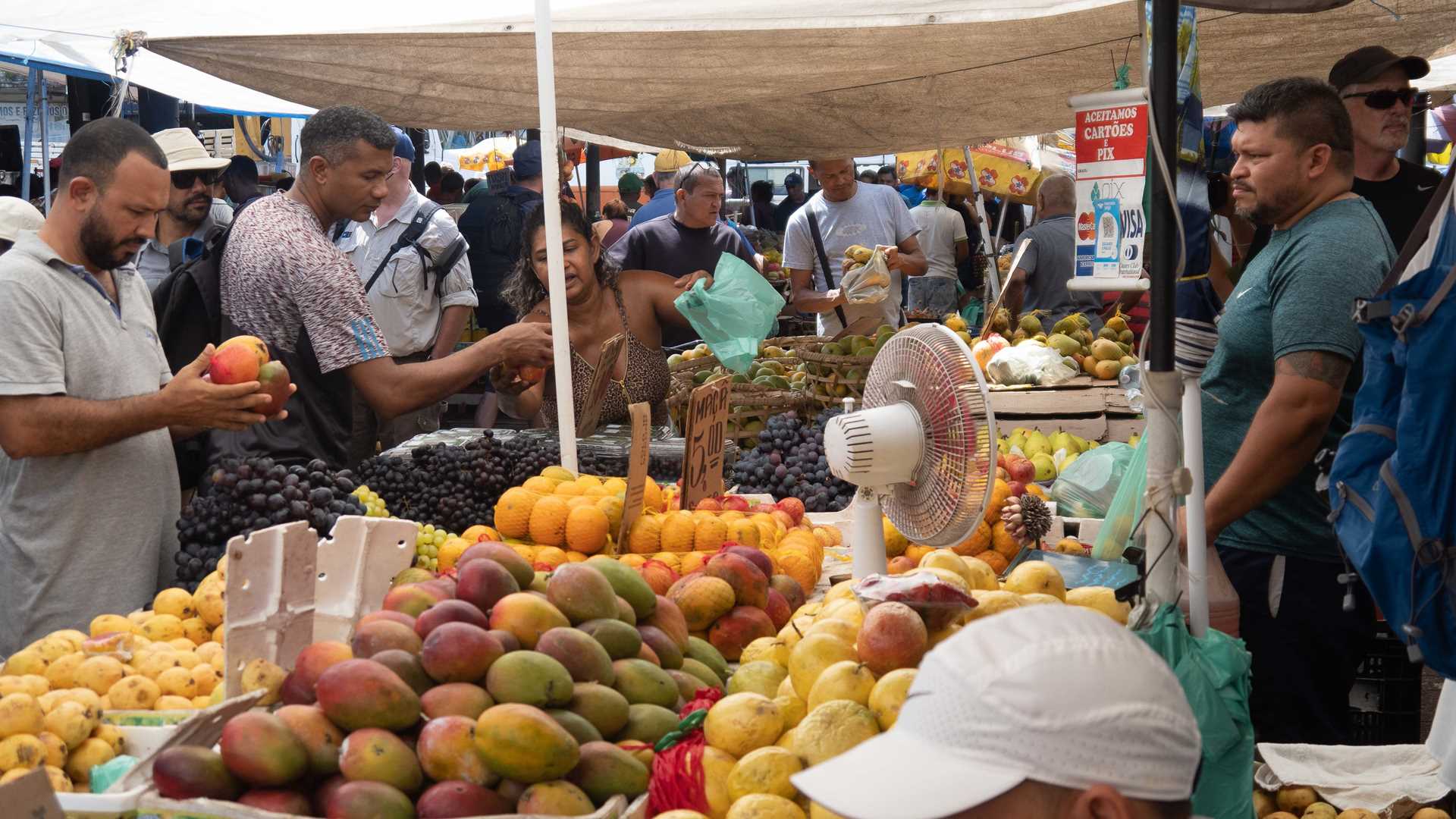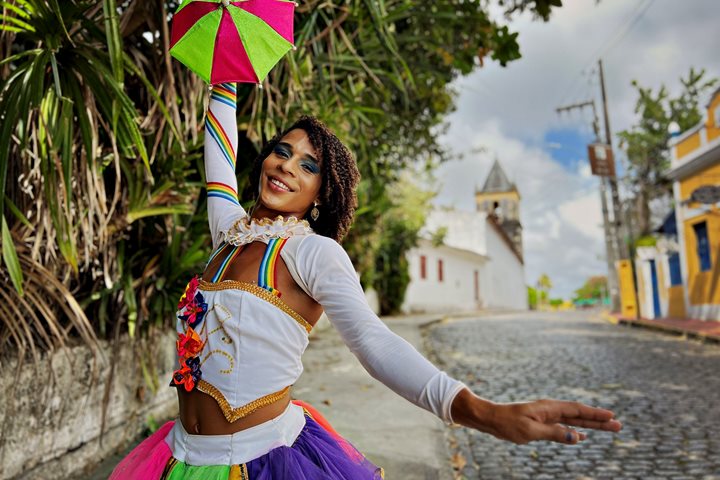After we transited across the massive Amazon Delta, we saw the skyline of Belém, the main city of the Lower Amazon, ahead of the ship. Almost 1.5 million people inhabit this center of commerce and industry. Even before the towers of the downtown area were clearly visible, the river was full of activity around the small docks and large warehouses. Products from the Amazon and the interior of the country come to Belém to be exported throughout the rest of the country and across the Atlantic to various locations around the world. We arrived during the two-week celebration of Círio do Nazaré, one of the largest religious celebrations in the world.
Because of the heightened activity in the city and along the main waterfront, the captain was instructed to anchor some distance from the central dock in front of the old historic part of the city. A 15-minute Zodiac ride transported everyone to the dock. Those of us who wanted to visit the famous Ver-o-peso market gathered with local guides, and we made our way a few blocks down the waterfront to the start of the huge market.
Ver-o-peso provides local people with just about everything they might need. Stalls were packed in under tent-like canopies to protect vendors from sun and, of course, rain. The sellers had clothes of all styles and colors. After that, we found housewares, including shiny aluminum pots, pans, and cookware. Then we ran into endless food stalls. Vendors prepared the tropical palm fruit, açai, by combining it with fried fresh fish. We observed cassava next, an important vegetable at this time of year and during this religious celebration. Just about every part of the plant is eaten but must be processed because it is naturally poisonous. One dish consists of cassava leaves that are cooked for days to make a sort of stringy, spinach-like dish. Many people were engaged in various steps of the involved processing.
Further along, we found a medicinal section, and then vegetables and fruits of all kinds. This produce is brought in fresh from the countryside. The fish market is housed in a large stone building, and it was a bit cooler inside. A wide variety of Amazonian fish were waiting for buyers looking for specific ingredients. Across the busy street, the last part of the market was the red meat section, which is housed in a very old, historic building with wrought iron stairs and balconies. This beautiful craftsmanship from the very distant past reveals a dominant European influence.
After a marvelous lunch at a fine restaurant on the outskirts of the city, some guests returned to the ship while others drove to a suburb to learn about ancient pottery craftsmanship made by inhabitants of Marajó Island. Returning to the dock in the late afternoon, the ride back to the ship was very lively since a wind from downriver was playing against the outgoing tide.
During the day, a small group of guests decided to take an excursion to an island community to the east of the city. This required a boat ride across a side river channel, followed by a bus ride to the community. Local representatives and a couple of guides explained and demonstrated activities that local people engage in during their everyday lives. After lunch in a waterside café, the group returned to Belém’s dock. Everyone enjoyed an interesting and fulfilling day as the captain pointed the bow toward the north.
Photo caption and photographer: A Ver-O-peso market booth of local fruits and vegetables. Photo by Bud Lehnhausen







